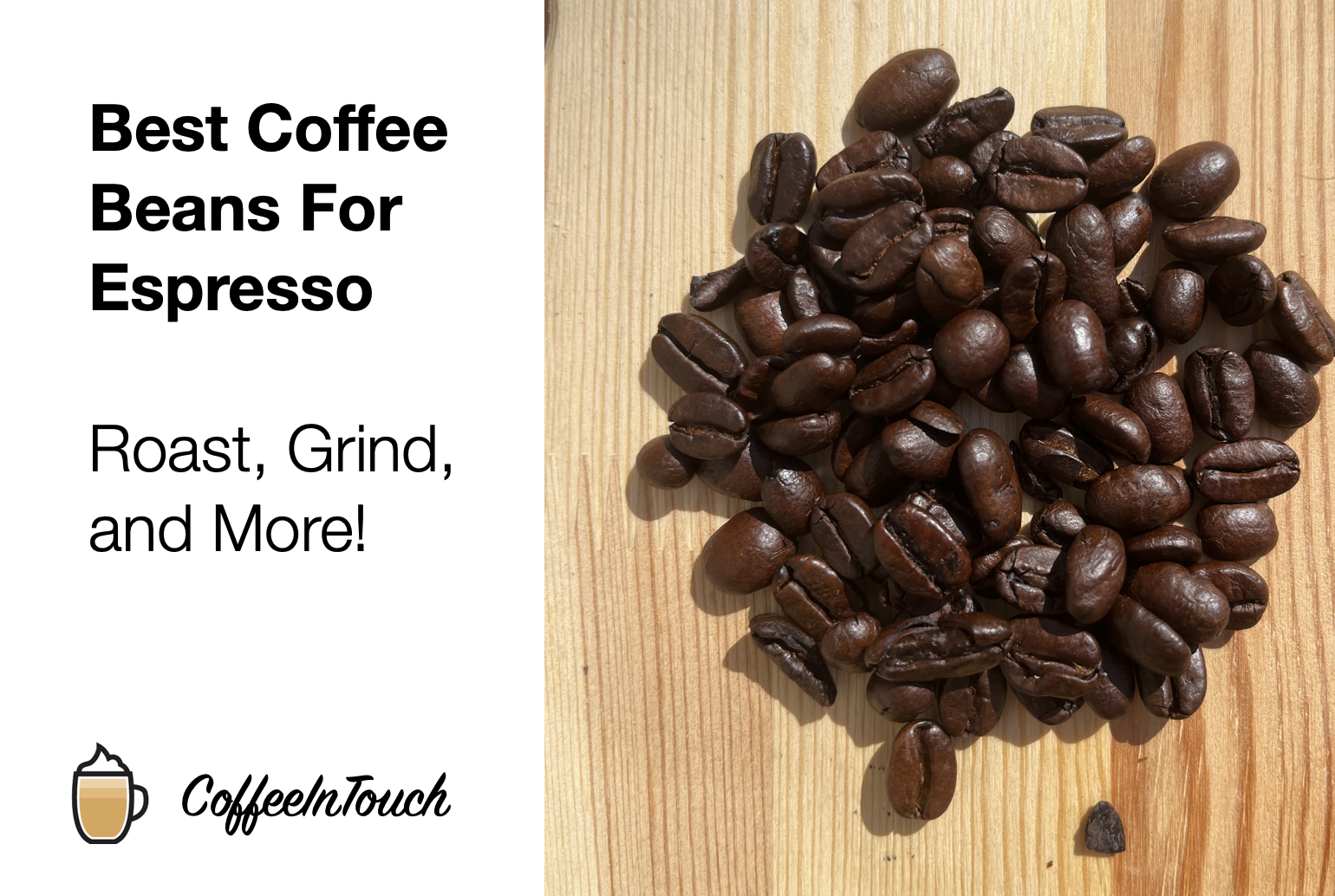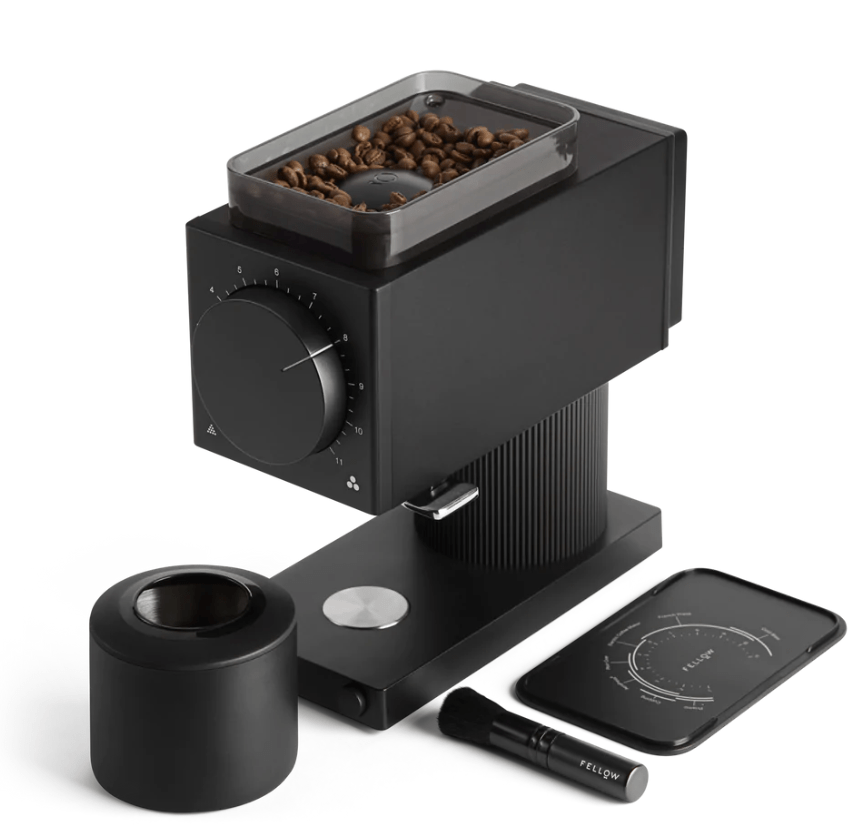Best Coffee Beans For Espresso

For many, the day begins after that first sip of espresso. But what differentiates a good shot from a great one? The secret often lies in the beans. Here’s a comprehensive guide to help you navigate the world of espresso beans and find the perfect match for your palate.
The Espresso Bean Basics
Espresso is not just a type of coffee; it’s an experience, a ritual. Originating from Italy, espresso requires a specific kind of grind, brewing method, and beans.
Single-Origin vs. Blend: The Great Debate
- Single-Origin Beans: These are sourced from one place, be it a country, region, or even a single farm. Their allure lies in their distinct, often unique flavors. These beans are for you if you’re after a coffee that tells a story of its origin.
- Blends: These are a mix of beans from different places, crafted to create a balanced flavor profile. Blends are great for those who crave consistency in their espresso shots.
Which is better? It boils down to personal preference—experiment with both to discover what resonates with your taste buds.
The Art of Roasting: Understanding Roast Levels
Roast levels greatly influence an espresso’s taste:
- Light Roasts: These beans have a milder flavor, often with floral or fruity notes. They may be acidic for some espresso purists.
- Medium Roasts: A crowd favorite for espresso, these beans balance acidity and deeper flavors.
- Dark Roasts: Rich and bold, with flavors like chocolate and caramel dominating. It’s ideal for those who love a robust shot.
Freshness: The Unsung Hero of Great Espresso
Coffee beans are like time capsules, locking in flavors that diminish with time. For the freshest espresso:
- Always check the roast date. Aim for beans roasted within the last month.
- Store beans in a cool, dark place, preferably in an airtight container.
Arabica vs. Robusta: The Bean Showdown
- Arabica Beans: Known for their sweetness and complexity, Arabica beans are often preferred for espresso due to their subtle flavors.
- Robusta Beans: These pack a punch! They have more caffeine and often impart a more potent, bitter taste.
While Arabica is the darling of specialty coffee shops, some traditional Italian espressos blend Arabica and Robusta for that extra kick and crema.
The Best Coffee Beans For Espresso
1. Volcanica Espresso Dark Roast Coffee
 Volcanica brings their excellent balance coffee with caramel notes of sweetness with this espresso dark roast coffee bean. Dark roasted, low acidity, it has a complex aroma that comes locked into the beans. When ordered directly from Volcania they roast it right before it ships, sealing all these aromas and flavors into the bean. There is no time sitting in a warehouse where the flavors and aromas dissipate. Volcanica will ship whole beans, or grind it to whatever consistency needed depending on brew type. Although we always recommend buying whole beans for the best results, and grinding with an adjustable Burr grinder for a consistent size.
Volcanica brings their excellent balance coffee with caramel notes of sweetness with this espresso dark roast coffee bean. Dark roasted, low acidity, it has a complex aroma that comes locked into the beans. When ordered directly from Volcania they roast it right before it ships, sealing all these aromas and flavors into the bean. There is no time sitting in a warehouse where the flavors and aromas dissipate. Volcanica will ship whole beans, or grind it to whatever consistency needed depending on brew type. Although we always recommend buying whole beans for the best results, and grinding with an adjustable Burr grinder for a consistent size.
Features:
- Certified kosher
- Flavor notes of sweet caramel, spice, low acidity
- Dark roast
- Any grind available
2. Peet’s Coffee, Dark Roast Whole Bean Coffee
The best Peet’s coffee for espresso is their dark roast called Espresso Forte, which as the name implies seems to be true. Espresso is this coffee’s forte! Peet’s Expresso Forte is 100% Arabica coffee, and sourced from the Americas and the Indo-Pacific. It is a medium-dark roast, with a full body and rich flavors of earthyness, and spiciness.
Features:
- 100% Arabica coffee beans
- Available as whole beans
- Dark roast, low acid
- Earthy flavor notes & spice
3. Black Rifle Coffee Whole Bean (Beyond Black Dark Roast)
![]()
Black Rifle Coffee’s Beyond Black Dark Roast is a well balanced dark blend with powerful aromas and notes of dark chocolate, and smokyness. It also features flavor notes of caramel, and nuts.
l especially like Black Rifle Coffee for their commitment to roasting in the USA. They have an incredibly close relationship with the coffee producers around the world and they are dedicated to hiring 10,000 veterans. It’s a good cause, and the coffee kicks butt!
Features:
- Strong & smooth
- Perfect for espresso
- Dark chocolate, caramel, nuts
- Smoky
4: Starbucks Espresso Roast
![]()
Starbucks Espresso Roast is a dark roast crafted for espresso, with a full body and robust, bold taste. It is ethically sourced from Latin America and Asia, and features notes of rich molasses and caramel, and is made with 100% Arabica coffee beans.
I recommend buying the whole bean coffee, and grinding it as needed for the ultimate freshness.
Features:
- 100% Arabica coffee beans
- Dark roast
- Full bodied, bold taste
- Flavor notes of rich molasses and caramel
5. illy Classico Espresso Ground Coffee, Medium Roast

illy is a well established Italian coffee company that specializes in espresso coffee. illy brings a unique flavor to the table with its Classico Espresso Ground Coffee with notes of chocolate and caramel. If you’ve ever visited someone in Europe, chances are this is in their cabinet! It’s a very common blend that is tried and true.
Made from 100% Arabica medium roast coffee it will not disappoint. Smooth & balanced, this coffee comes ready for your espresso machine. It also comes in an Intenso Bold Roast if looking for a bit more punch.
Features:
- Tried & true Italian espresso
- Bold, aromatic, nutty
- Finely ground, packed in an air tight container for up to two years of freshness
6. Lavazza Super Crema Whole Bean Coffee Blend, Medium Espresso Roast


Lavazza is another well established Italian coffee company. They produce the Lavazza Super Crema which is equally popular for its full body flavor with notes of hazelnut and brown sugar.
The Super Crema is the one coffee on our list that is actually a 60/40 blend of Arabica/Robusta. The result is a rich aromatic intensity with a light touch of sweetness. And most importantly, and excellent crema.
Features:
- 60/40 Arabica/Robusta blend
- Well balanced
- Available as whole bean
- Flavor notes of hazelnut and brown sugar

What Type of Ground Should You Use For Espresso?
Espresso requires a fine grind, with a particle size around 0.3 mm. This is because espresso is brewed under high pressure, which can only be achieved with a fine grind. The fine grind allows the water to extract the maximum flavor from the coffee beans.
Best Grinder For Espresso Beans
Let’s talk grinders. You’ve got two options: the manual burr grinder that’s like a vintage car—cool but takes some effort. Expect a solid 5-10 minutes of arm workout. But hey, who needs the gym when you’ve got coffee to grind? Am I right?
I recommend buying whole bean coffee and using a burr grinder to achieve a fine ground coffee. Burr grinders excel at consistent grind sizes much better than blade grinders, and this will result in an even extraction. All of the coffee grounds should be extracted at the same rate for an even flavor.

![]()
Now, if you’re more of a “time is money” kinda person, you’ll wanna go for the automatic burr grinder. Think of it as the sports car of coffee grinding—sleek, fast, and gets the job done before you can say “double shot.”
Whether you go manual or automatic, a burr grinder is your secret weapon. Why? Because these bad boys come with a whole range of settings—usually between 8 and 18—giving you the precision of a sniper. Perfect for dialing in that espresso grind to the micron.
Exploring Brands and Reviews
With countless brands on the shelves, where do you start? Dive into reviews. Coffee communities online are treasure troves of insights and recommendations. Sometimes, the best brew comes from the most unexpected beans.
Coffee Clubs and Subscriptions: A Journey of Discovery
Subscription services offer curated experiences, delivering beans from different roasters to your doorstep. It’s an excellent way for enthusiasts to explore a range of flavors without being overwhelmed.
Expert Tips and Common Mistakes
- Grind just before brewing to preserve flavor.
- Ensure your water is at the right temperature (between 195°F to 205°F).
- Avoid beans that look overly oily, as they can clog espresso machines.
Conclusion
Finding the perfect espresso beans is a journey, not a destination. As you explore, you’ll refine your palate and discover beans that resonate with your taste. Remember, the best beans are the ones you love the most. Happy brewing!


